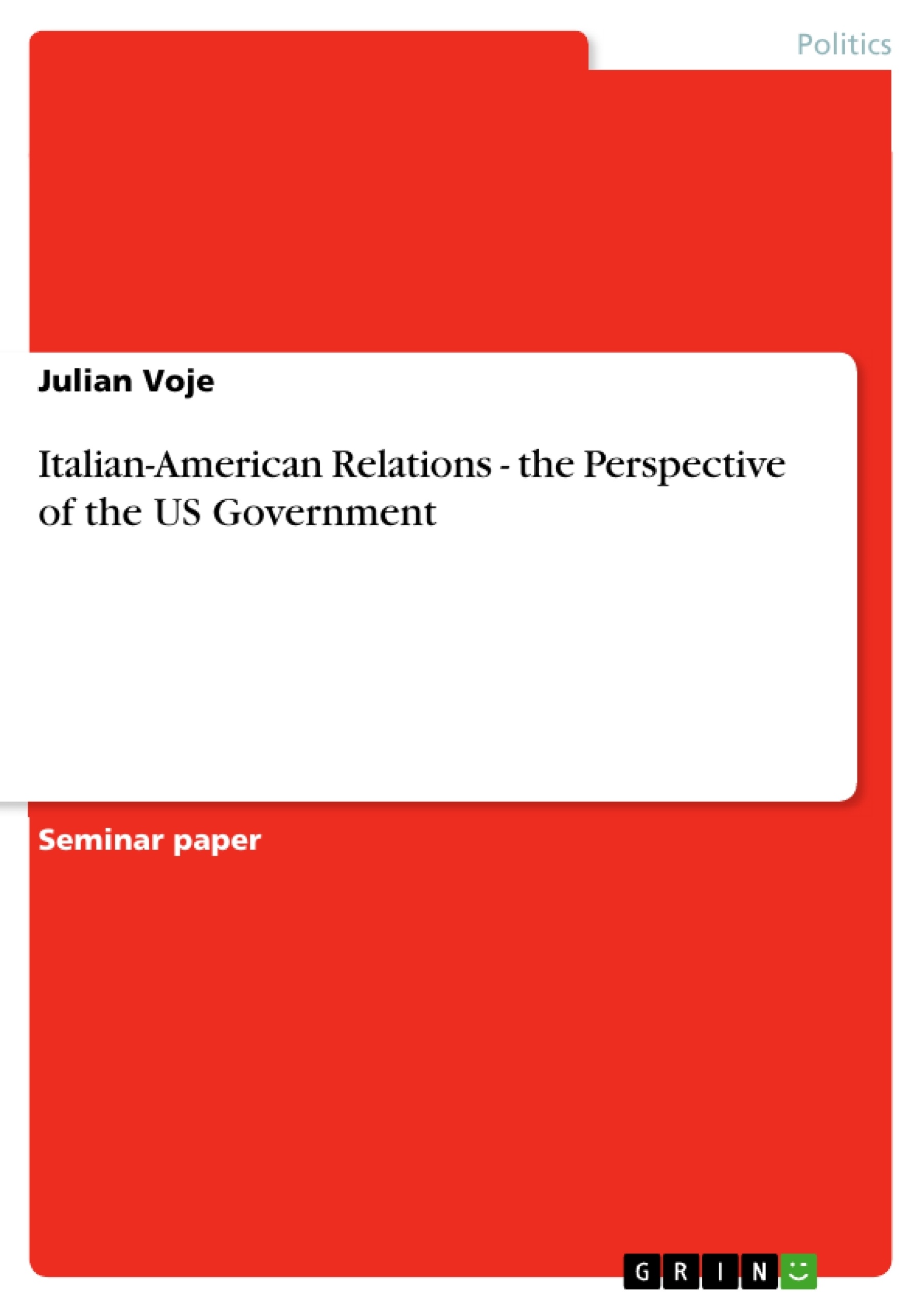The view of the United States of America concerning Italy after Benito Mussolini’s “March on Rome” was important for the whole of Europe. The political course of the fascist country also affected the surrounding European states. In the primary phase of the fascist regime, the U.S. government was in the position to alter parts of Italy’s policy course, by applying political pressure. Thus America’s foreign policy towards Italy did not only concern this one country. It also had consequences for the rest of Europe, and the start of the Second World War.
This work is concerned with the view of the successive American administrations towards Italy after Mussolini’s ascension to power. Questions being answered are:
How did the U.S. government react after the fascist ruler took over Italy? Did the administration valuate Mussolini as a positive or a negative change for the European country? Was a thread visible in the U.S. attitude concerning Italy? What were the government’s reactions to Italy’s cooperation with Hitler? And: Could a different American political strategy concerning Italy have hindered Hitler’s war efforts?
To answer those questions, the work is structured along three main parts. The first part is addressed with the U.S. government’s position after Benito Mussolini’s soaring to power. This part is divided into a description of America’s characterization of the new leader and an account of the first times the U.S. questioned their view on Italy. Following this evaluation, the second part deals with the American view in the times of The Great Depression. The third part is concerned with the administrations view after Hitler’s rise to power. Finally the conclusion marks the end of this work.
Mainly four books were used: David F Schmitz’ “The United States and fascist Italy, 1922 – 1940” gives a well structured and informative overview of the American – Italian relations from Mussolini’s ascension to power, until the begin of The Second World War. Another useful book, in the first parts handling this topic, is H. Stuart Hughes’ “The United States and Italy”1. John P. Diggins’ work “ Mussolini and Fascism: The view from America”2 is mainly concerned with the public opinion in the U.S. toward Italy and very informative. Another well written and informative book dealing with America’s foreign policy is William L. Langer’s and S. Everett Gleason’s book “The challenge to isolation: The world crisis of 1937 – 1940 and American foreign policy”.
Inhaltsverzeichnis (Table of Contents)
- Introduction
- Main part
- A. The US government's view on the rise of Mussolini
- A.1 The characterization of the new leader
- A.2 The view being questioned
- B. The US governments view in times of the great depression
- C. The U.S. governments view after Hitler's rise to power
- A. The US government's view on the rise of Mussolini
- Conclusion
Zielsetzung und Themenschwerpunkte (Objectives and Key Themes)
This work examines the United States government's perspective on Italy after Benito Mussolini's rise to power, particularly analyzing its reaction to the fascist regime. It explores how the American administration perceived Mussolini, whether they saw him as a positive or negative change for Italy, and how the government responded to Italy's collaboration with Hitler. The work aims to determine if a different American political strategy could have hindered Hitler's war efforts.
- The US government's view on Mussolini's rise to power
- The American government's assessment of Mussolini and his regime
- The impact of the Great Depression on US-Italy relations
- The US government's response to Italy's collaboration with Hitler
- The potential influence of American political strategies on Hitler's war efforts
Zusammenfassung der Kapitel (Chapter Summaries)
The introduction provides an overview of the US government's view on Italy after Mussolini's "March on Rome" and highlights the significance of this view for the entire European landscape. It lays out the research questions that drive the analysis. The first part of the work examines the US government's initial reaction to Mussolini's rise to power, focusing on how they characterized him as a leader and the first instances of questioning their initial positive view.
The second part delves into the American perspective on Italy during the Great Depression, while the third part explores the US government's view after Hitler's rise to power. The work culminates in a conclusion that summarizes the findings and insights gained.
Schlüsselwörter (Keywords)
This work explores key themes such as US foreign policy, fascist Italy, Benito Mussolini, the Great Depression, US-Italy relations, the rise of Hitler, and the potential impact of American policy on the Second World War. It draws upon historical analysis and primary sources to provide a nuanced understanding of the American government's perspective on Italy during a pivotal period in European history.
- Citation du texte
- Julian Voje (Auteur), 2003, Italian-American Relations - the Perspective of the US Government, Munich, GRIN Verlag, https://www.grin.com/document/12264



